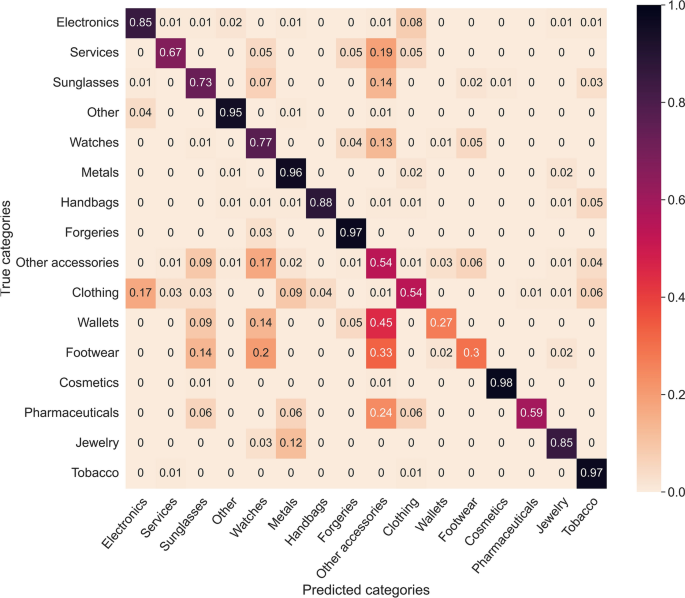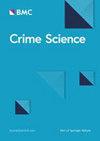Counterfeits on dark markets: a measurement between Jan-2014 and Sep-2015
IF 3.1
Q1 CRIMINOLOGY & PENOLOGY
引用次数: 0
Abstract
Abstract Counterfeits harm consumers, governments, and intellectual property holders. They accounted for 3.3% of worldwide trades in 2016, having an estimated value of $509 billion in the same year. Estimations in the literature are mostly based on border seizures, but in this paper, we examined openly labeled counterfeits on darknet markets, which allowed us to gather and analyze information from a different perspective. Here, we analyzed data from 11 darknet markets for the period Jan-2014 and Sep-2015. The findings suggest that darknet markets harbor similar counterfeit product types to those found in seizures but that the share of watches is higher while the share of electronics, clothes, shoes, and Tobacco is lower on darknet markets. Also, darknet market counterfeits seem to have similar shipping origins as seized goods, with some exceptions, such as a relatively high share (5%) of dark market counterfeits originating from the US. Lastly, counterfeits on dark markets tend to have a relatively low price and sales volume. However, based on preliminary estimations, the equivalent products on the surface web appear to be advertised for a multiple of the prices found for darknet markets. We provide some suggestions on how information about darknet market counterfeits could be used by companies and authorities for preventative purposes, showing that insight gathering from the dark web is valuable and could be a cost-effective alternative (or compliment) to border seizures. Thus, monitoring darknet markets can help us understand the counterfeit landscape better.

黑市上的假货:2014年1月至2015年9月的测量
假冒产品危害消费者、政府和知识产权持有人。2016年,它们占全球贸易的3.3%,同年的估计价值为5090亿美元。文献中的估计大多基于边境缉获,但在本文中,我们研究了暗网市场上公开标记的假冒产品,这使我们能够从不同的角度收集和分析信息。这里,我们分析了2014年1月至2015年9月期间11个暗网市场的数据。调查结果表明,暗网市场上的假冒产品种类与查获的相似,但手表的份额较高,而电子产品、服装、鞋子和烟草的份额较低。此外,暗网市场仿冒品似乎与缴获的商品有着相似的运输来源,但也有一些例外,比如来自美国的暗网市场仿冒品所占份额相对较高(5%)。最后,黑市上的仿冒品往往价格和销量都相对较低。然而,根据初步估计,表面网络上同等产品的广告价格似乎是暗网市场价格的数倍。我们就公司和当局如何利用暗网市场假冒产品的信息进行预防提供了一些建议,表明从暗网收集的信息是有价值的,可能是边境缉获的一种具有成本效益的替代方案(或补充)。因此,监控暗网市场可以帮助我们更好地了解假冒产品的情况。
本文章由计算机程序翻译,如有差异,请以英文原文为准。
求助全文
约1分钟内获得全文
求助全文
来源期刊

Crime Science
Social Sciences-Cultural Studies
CiteScore
11.90
自引率
8.20%
发文量
12
审稿时长
13 weeks
期刊介绍:
Crime Science is an international, interdisciplinary, peer-reviewed journal with an applied focus. The journal''s main focus is on research articles and systematic reviews that reflect the growing cooperation among a variety of fields, including environmental criminology, economics, engineering, geography, public health, psychology, statistics and urban planning, on improving the detection, prevention and understanding of crime and disorder. Crime Science will publish theoretical articles that are relevant to the field, for example, approaches that integrate theories from different disciplines. The goal of the journal is to broaden the scientific base for the understanding, analysis and control of crime and disorder. It is aimed at researchers, practitioners and policy-makers with an interest in crime reduction. It will also publish short contributions on timely topics including crime patterns, technological advances for detection and prevention, and analytical techniques, and on the crime reduction applications of research from a wide range of fields. Crime Science publishes research articles, systematic reviews, short contributions and theoretical articles. While Crime Science uses the APA reference style, the journal welcomes submissions using alternative reference styles on a case-by-case basis.
 求助内容:
求助内容: 应助结果提醒方式:
应助结果提醒方式:


